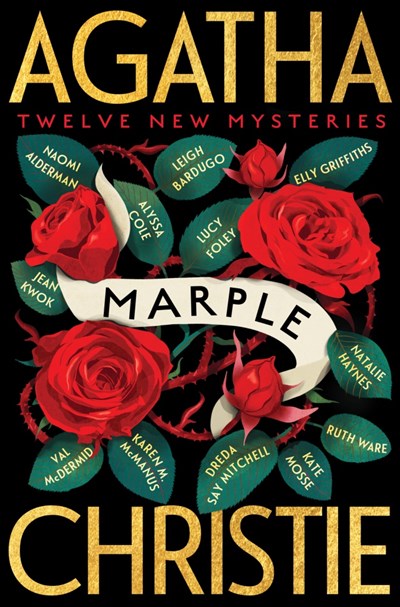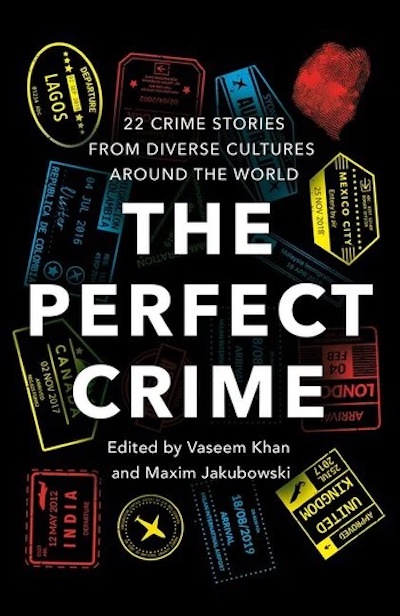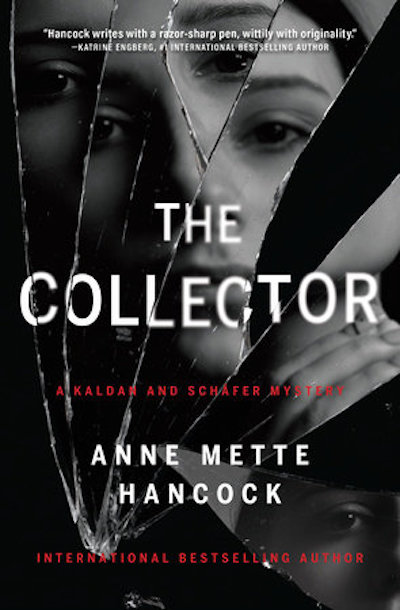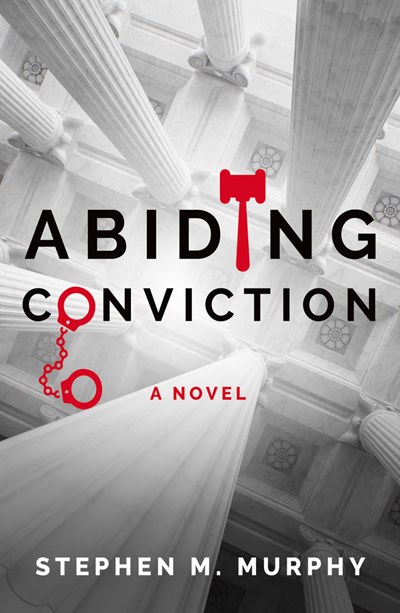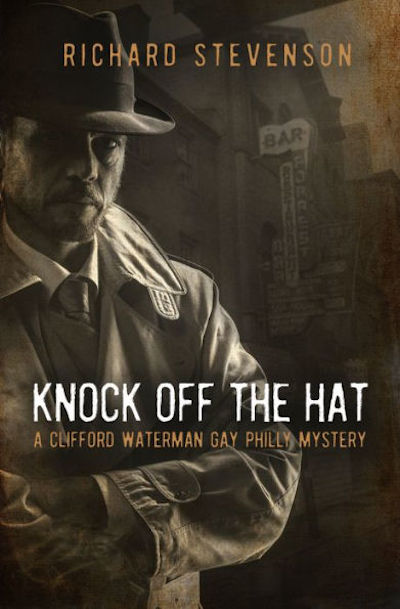A dozen terrifically talented and diverse authors—including Alyssa Cole, Lucy Foley, Val McDermid, and Dreda Say Mitchell—reimagine that most iconic of amateur sleuths: Miss Jane Marple. Billed by the publisher as a way to introduce a new generation to Miss Marple—likely best done by Christie’s books, actually—this collection reads more like fanfiction and is sure to delight Marple enthusiasts, who comprise a great swath of mystery fiction’s readership. Miss Marple is no stranger to the short story, having been first introduced to readers in a 1927 magazine. But here we see her in some extraordinary circumstances, while never losing sight of who she really is. A formal dinner at one of the Oxford colleges descends into sexual harassment and Quaalude popping—to tragic ends. A brief stop-over to visit an old school friend in a country village results in the sort of complex murder we expect only Miss Marple to decipher. When a young woman keels over dead at a wedding, Miss Marple teams up with her Caribbean-born friend, Miss Bella. But not all the stories involve murder; stolen pearls ruin a Christmas dinner, until Miss Marple slowly drops the pieces into place, to the surprise of the other guests. Fun to read in print, this collection would make a great audiobook.
Mystery & Detective
Is it a gothic romance? Yes, indeed. Is it a mystery? That, too. In fact, A Dreadful Splendor uses nearly all the tropes of the gothic, adding a bit of humor to the mix. Genevieve Timmons, all of 19 years old, is a spiritualist, a conjurer, adept at calling forth the dead to assuage the grief of the living—and lining her own pocket. Trained by her mother, who is recently deceased, Genevieve has hit a bad patch and is in jail until she’s approached by a gentleman who wants her to summon the dead bride of his boss, Mr. Pemberton. Except when Genevieve arrives at Somerset Park, Mr. Pemberton’s estate, she discovers that the widower believes his bride was murdered, and he wants Genevieve to stage a session so powerful it will reveal the killer. (As for Mr. Pemberton, he’s one part Mr. Darcy, one part Heathcliff, and one part Maxim de Winter. Brooding and beautiful.) With days to go before the séance, there’s plenty of time for Genevieve to rattle around the estate, research the past, and become terrified of a ghost who may well be the real thing. Lots of fun for readers who enjoy historical mysteries with a double serving of atmosphere.
An anthology of 22 short stories that are selected to witness, as Maxin Jukubowski writes in the introduction, “an explosion of crime and mystery writing by writers of all colours and ethnic backgrounds, winning awards and enjoying critical acclaim, as well as opening up a whole new readership in the process.” And this marvelous collection certainly doesn’t disappoint, with crime stories from diverse cultures, featuring works by S.A. Cosby, Silvia Moreno-Garcia, Rachel Howzell Hall, Sanjida Kay, Walter Mosley, and so many more. It’s fun to encounter authors you think you know trying out something entirely new, such as Abir Mukherjee, who leaves behind 1920s India for a very contemporary tale of crime that ends in a most pleasing way. In fact, many of the stories are full-blown mysteries, just boiled down to their essence, with the shocking, O. Henry-like twists that readers love. Oyinkan Braithwaite’s “Jumping Ship,” a brilliant recounting of a love affair that goes way, way off the rails is so surprising it demands the reader give it a second, or even third, reading. A surefire way to introduce readers to authors, The Perfect Crime is a required purchase for all public libraries.
Hancock’s series debut, The Corpse Flower, which featured in this newsletter’s debut, introduced Danish journalist Heloise Kaldan and police officer Erik Schäfer. The somewhat jaded friends don’t work together per se—it’s more that they investigate the same crime in parallel while throwing each other tidbits that help move the case along. Their unusual arrangement swings into gear again when a child goes missing. Lukas Bjerre goes to the same Copenhagen school as Heloise’s friend’s daughter, so the journalist has an in, but that doesn’t make the search any easier. Lukas seems to have simply vanished, with the whole school day having passed before anyone noticed. At the same time, Heloise is going through personal turmoil as she’s unwillingly pregnant, the father “a crummy wolf in permanent press trousers,” according to Schäfer. Adding to Kaldan’s anguish is her inability to remember where she saw a barn that the missing boy might be held in—one that features in Lukas’s collection of photos illustrating his pareidolia, or tendency to see faces in inanimate objects. As the search continues, a suspect’s PTSD forms part of the tale, adding to the feeling that this whole case hinges on mental instability, with the danger to Lukas the one constant in a storm of fear. Kaldan and Schäfer form a realistic and entertaining if gruff duo, one whose work readers will gladly jump into again.
This is turning out to be one of the most unique, captivating, and above all emotionally engaging crime fiction series being published. Happy Doll—yes, that’s his real name—is 50-ish, ex-military, and a former LAPD cop who lost his PI license and now calls himself a “security consultant.” Yes, Doll has many of the noirish trappings of your classic LA detective, from his worn-down office to his status as a regular at a dive bar. But he’s also a fledgling Buddhist who’s in love with George, a half-Chihuahua, half-terrier mix, is in psychotherapy, and is incredibly generous to those he comes across—provided they’re not trying to kill him. In this story, Doll is approached by a young woman to search for her mother, Iris Candle, who’s likely to be homeless. Candle and Doll, it turns out, were lovers years ago, and Doll can’t turn down an opportunity to see her again. After a week of searching, Doll finally locates Candle—worn down by drugs and years of living on the streets—and their reunion is one of the most poignant passages I’ve read in years. It also sets off the book’s real narrative, complete with some horrific, but highly entertaining, violence and a quest that brings Doll to the edge. As much as I love Ames’ novels and comic memoirs, Happy Doll is his most innovative and successful character yet. Fans of aged, semi-hard-boiled, humorous Los Angeles detectives will also enjoy Andy Weinberger’s The Kindness of Strangers.
Manchester, NH judge Carlos Garcia is in an unexpected and uncomfortable spot: the defendant’s seat, accused of murdering his wife by adding an overdose of Vicodin to her dinner. In every way, he’s one of lawyer Dutch Francis’s least-favorite clients. The judge is not open to any advice, thinks he still has the upper hand in the courtroom, and is clearly withholding information about his wife’s death. Francis is already thinking he shouldn’t have taken this case when he gets two sharp shocks: his famous newscaster wife, Ginnie—they’ve been married a good five minutes—tells him she’s pregnant and not sure she wants to keep the baby, and, later that day, she goes missing. Francis believes she’s been kidnapped, a suspicion that’s borne out as he begins to receive oddities, such as her fingernail clippings, in the mail. The suspense is in high gear throughout this thriller as we follow the twists and turns of the courtroom drama and the chase when Francis hounds the cops to find his wife, but also joins his legal investigator on their own sometimes-scary bid to rescue Ginnie. A startling ending is in store, and getting there is an enjoyable trip through memorable characters, love-fueled desperation, and the exasperations of the justice system.
Publishers: Wondering how to keep crime fiction relevant, cutting edge, and appealing to younger millennials and older Gen Z? Then take a page out of the impressive debut Someone Had to Do It. Brandi may have landed her dream job unpaid internship at the fashion house Simon Van Doren, but she wasn’t planning on the microaggressions and reminders that as a young, Black woman she doesn’t fit into the culture (“code for we-can’t-handle-your individuality but-since-we-don’t-want-to-seem-racist-we’ll-invent-this little loophole”). But Brandi’s tenacious—she’s also putting herself through fashion school—and with a little help from dreamboat boyfriend Nate, an up-and-coming football star, she manages to hang in there. When Nate offers to put in a good word with Taylor Van Doren, Simon’s daughter—they go back to prep school—Brandi can’t say no. Taylor’s an it-girl, a model and fashionista who has it all and then some. While Brandi hopes that friendship with Taylor will help launch her career, the opposite happens. Taylor—the absolute best villain I’ve read this year—sets Brandi up for a fall where she risks losing everything she’s worked so hard to achieve. This is one smart, hot, bingeable read that’s got Attn: Netflix stamped all over it.
The backbiting Armitage family has a Christmas tradition at their country mansion, Endgame House: the matriarch of the family creates cryptic riddles for them to solve. Lily was best at the game in the past, until her cousins were so mean to her that she let them win. Now Lily is returning from London to Endgame for the first time since she found her mother dead in the house’s garden maze years before. The family is gathering for a final game, one that’s stipulated in their Aunt Liliana’s will: they’re competing to win the house, and must solve one riddle per day over the 12 days of Christmas. Liliana’s letter to Lily enticed the young designer—known for making exquisite corsets—to the showdown by promising that she would find out who killed her mother. That’s not to be the last grisly death at Endgame, because as soon as the play is on, so is the killing, with Yorkshire’s worst snow in years keeping the miserable contestants trapped. Paralleling the corsetry details are many other kinds of entrapment—in the house, in childhood-throwback behavior that emerges when the cousins get together, and in Lily’s feeling that she can never escape that moment in the maze. But there’s love trapped in this house too, and the word puzzles posed to the family (and anagrams listed in the foreword for readers to solve as they read the book) provide an intriguing and engrossing way to get to that warmth. Just the ticket for next winter, alongside Mark Dunn’s wordgame novel Ella Minnow Pea.
It’s summer in post-World-War-II Philadelphia. The temperature is rising, and so too is the gay bashing, thanks to the police department and the City’s hugely corrupt judicial system. Tough-talking, but also hugely funny, Clifford Waterman—a former police detective who received a dishonorable discharge from the Army for being caught in the act in Cairo—is trying to make a go as a noirish PI. He’s hired to get the charges against a young man caught up in a bar raid dismissed and his $500 bribe reduced. Shake-downs of lesbians and gay men are nothing new, but Waterman begins to realize that the scope of the attacks and the size of the bribes are escalating hugely—along with the psychological damage and suicides that the publicity is causing among the LGBTQ community. Waterman’s search is a broad one, taking him throughout the greater Philadelphia area and up and down the social ladder. Sex and lovers, the relationships between Black and white queer men—expect the racist language of the day—and jazz and the blues all contribute to creating a memorable time and place. It’s great to have the author of the ground-breaking Don Strachey novels back with what we can only hope will be as prolific a series.
It’s 2 p.m., and Evander “Andy” Mills is sitting alone at a bar, suicidal ideations dancing in his head. And for a good reason. A detective with the San Francisco police, his world was ripped apart when he was caught in flagrante delicto during a raid on a gay bar and thrown off the police force. This is, after all, 1952, and until now Andy has succeeded in keeping his sexuality locked away from the rest of his life. As he reaches for his fifth martini, he’s interrupted by a society woman who has a proposal for him: investigate the mysterious death of her wife, Irene Lamontaine, who died in Lavender House, the family estate. Did she say “wife?” Indeed she did. And off we go to Lavender House, home to the Lamontaine family, who own a soap dynasty, and where nearly everyone, from family members to the help, is absolutely queer. Their world is a fascinating one, as free as it is safe—until, that is, Irene was murdered. No reader who’s made it through the first chapter could ever think of abandoning this magical novel as it morphs into a sort of locked-room mystery with culprits everywhere. But as engrossing as the Lamontaines may be, it’s Andy who centers the narrative, and who emerges from the story—to use contemporary jargon—beginning to heal, both physically and emotionally. Here’s hoping this is just the beginning of Andy Mills’ investigations.

